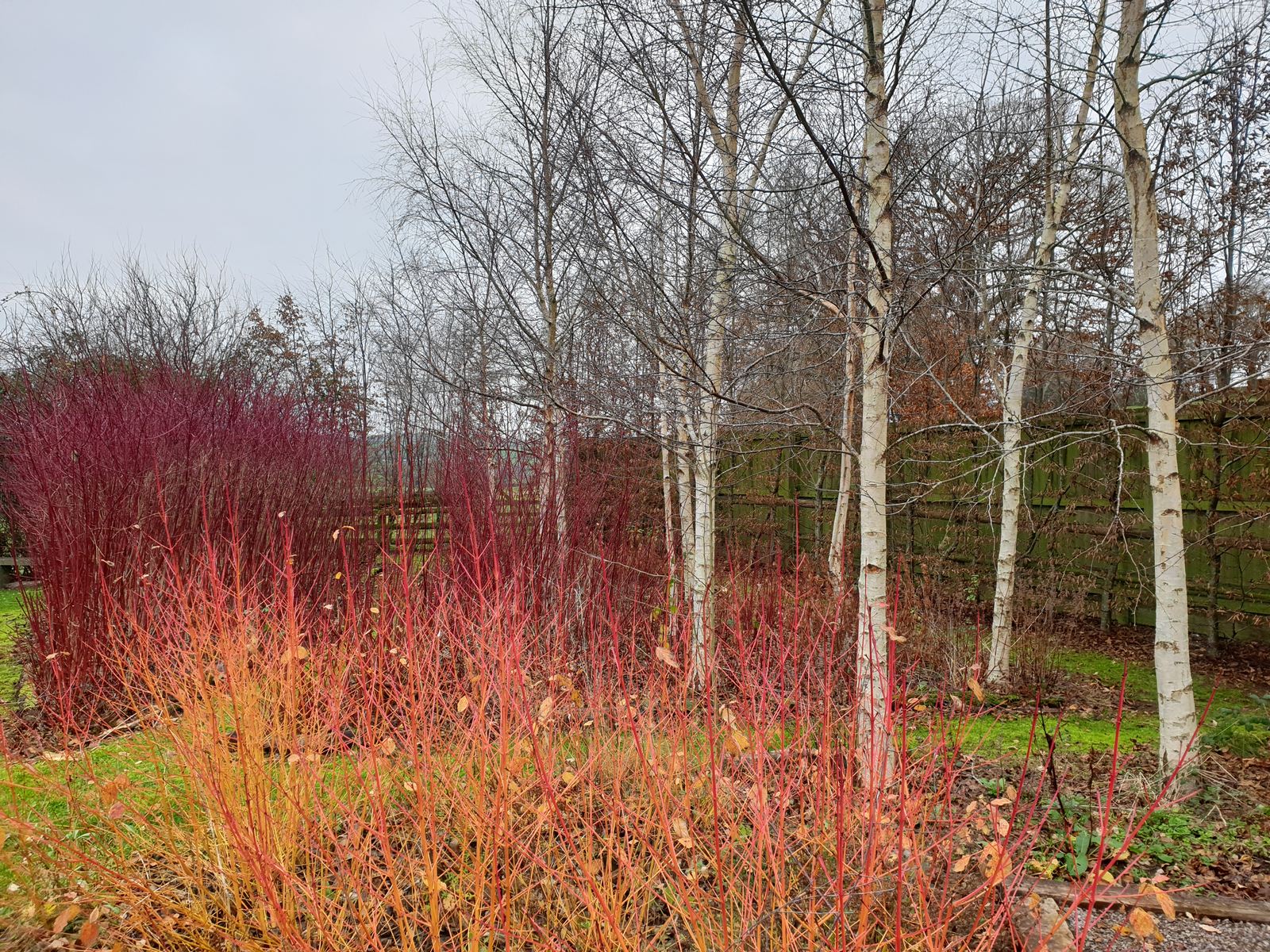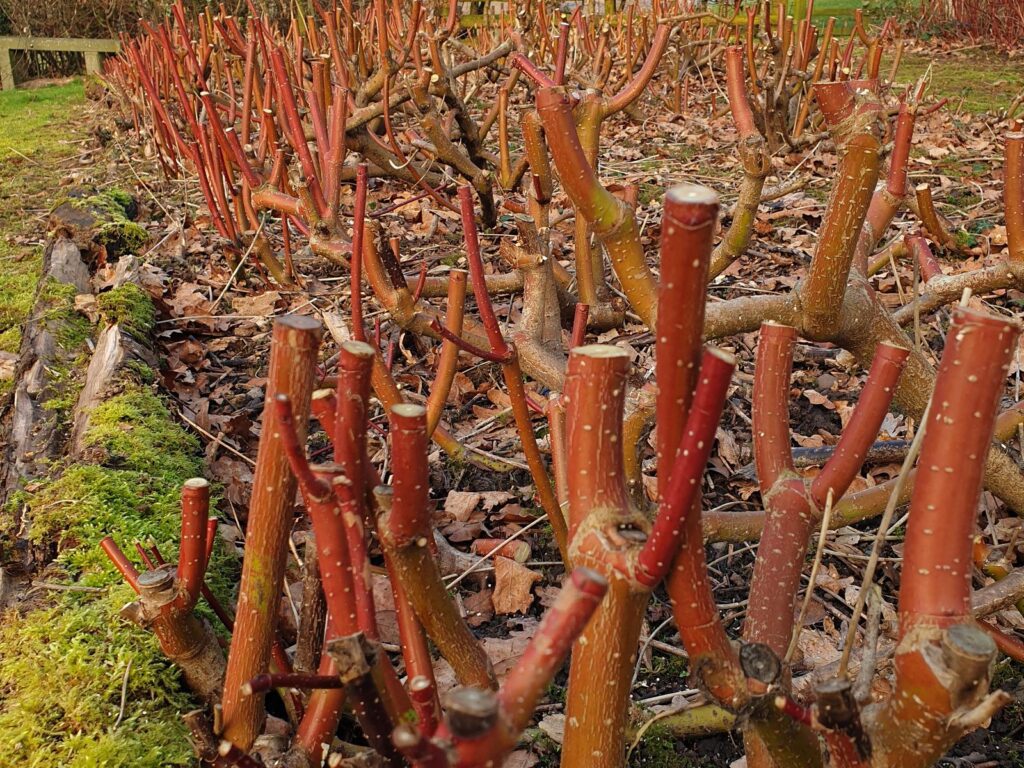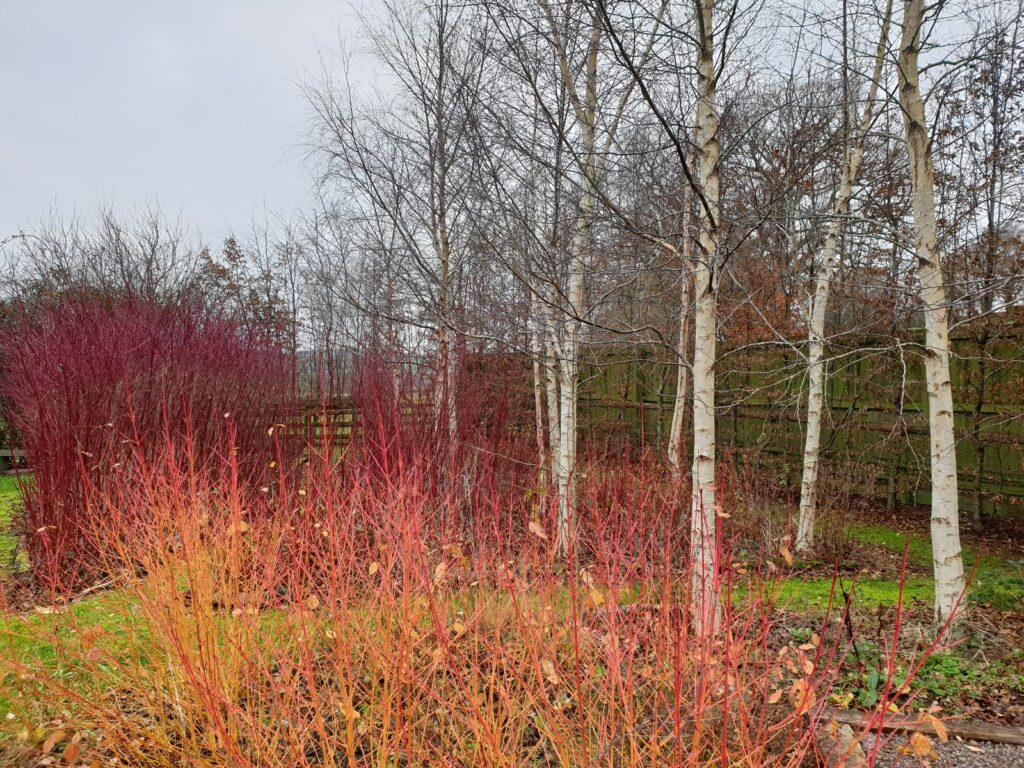Dogwoods (Cornus), Willows (Salix) give the best winter colour on young stems so an annual (or less for some such as Cornus ‘Midwinter Fire) coppice or pollard is recommended.
Coppicing Dogwoods and Pollarding Willows
Late February through March, just as the buds are beginning to swell, before the plants stored reserves have been expended on growth that will be cut out, prune hard to the required height:
- Coppicing for Dogwoods, around 5cm above ground just above a pair of buds. Height is determined by position in border, effect wanted and individual gardener and their intransigent approach.
- Pollarding for Willows, height determined by effect required: the coloured stems of Salix alba ‘Bristoliensis’ for example are often pollarded to a short main stem 2-4 ft high. Where grazing pressure is high, pollard to a single stem 6-8ft high
The garden team, in cold rain and a buoyant mood, have just carried out the annual coppice of the dogwood beds in one of our regular gardens near Llantilio Crossenny that now opens under the National Gardens Scheme.
There is always some reluctance to start the annual coppice. Not for the fainthearted. Gardening to maintain flower and form can be quite assertive.
Below, the remaining bed of Cornus sanguinea ‘Midwinter Fire. A selection of the native Dogwood (Cornus sanguinea), probably my favourite winter dogwood with its strong, brilliant, colours. Unfortunately it is a horrible summer shrub, its new leaves always looking diseased and, well, yellow. A good option is to use it as a winter pot plant, to be relegated to its summer quarters out of sight. Sorry.

The autumn colours of Cornus alba ‘Sibirica’ should not be underestimated!









